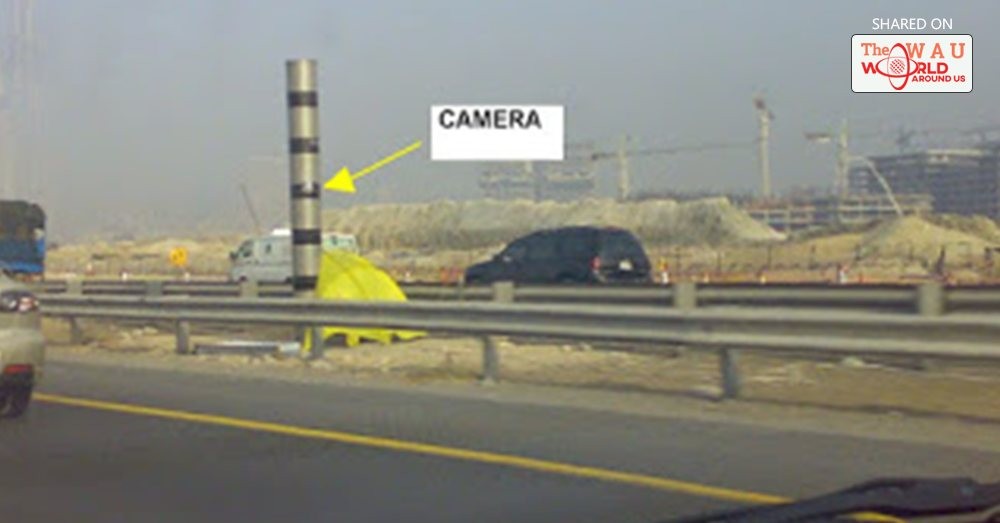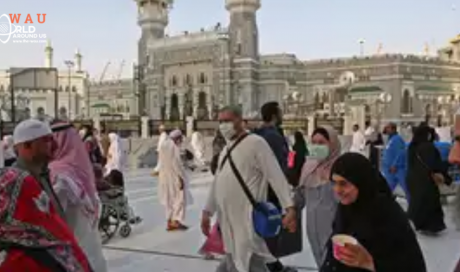Saher in Arabic means ‘one who remains awake”. Saher cameras are an automated system for the management of traffic and cover major cities in Saudi Arabia. Saher is a multi-objective projective, which can monitor vehicles and track them using license plate recognition technology. New Saher Cameras are being installed on all the roads of Saudi Arabia starting from major cities Riyadh, Jeddah and Dammam. The New Saher cameras are high resolution cameras which can capture images in all directions by 360° rotation. The cameras can pinpoint violations as minute as speaking on mobile phone, reading an SMS or not wearing a seat belt. Today we are going to mention some less known facts about New Saher Cameras of Saudi Arabia.
- Speed Limit: Just like old Saher Cameras, new Saher cameras can also detect if a vehicle is driving over and above the speed limit. There was a problem with the old Saher Camera that it was not able to detect the speed limit violation of the trucks. As all of us know that when normal vehicles have a speed limit of 120Km/hour, big vehicles and trucks have a speed limit of 65 KM/hour. Old Saher cameras were not able to detect this speed limit violation of trucks even when they drive at 100Km/Hour as far as it is below 120Km/Hour. However, new Saher cameras have this feature of detecting the speed limit violation of each and every vehicle separately.
- Changing Lanes: New Saher cameras also have the ability to check if a vehicle is changing lanes excessively. We have seen many a times that trucks which are allowed to drive in the slowest lane only, drive in the middle lane. Now with the help of new Saher cameras, these violations will be detected by the system.
- Distance between 2 vehicles: New Saher cameras also have the ability to measure the distance between two vehicles. The appropriate distance between two vehicles varies from vehicle to vehicle. In case of Sedan car, the appropriate distance is at least 3 seconds. In case of SUVs, it is 4 seconds and in case Trucks and Heavy Vehicles, it is 5 seconds. If you are not maintaining this distance, be ready to receive a traffic violation SMS as new Saher cameras can detect you.
- Average Speed between 2 Saher Cameras: Generally people drive their cars over and above the specified speed limit and lower down the speed at the time when they reach near the Saher cameras. Traffic authorities are well aware of this fact. So they have designed new Saher cameras in a way that it measures average speed between 2 Saher cameras. In case a driver is over-speeding during those time when Saher camera is not around but lowering down its speed at the time when Saher camera is around, New Saher cameras can note this violation.
- Speaking on Mobile, Reading SMS and not Wearing Seat Belt: Saher has a highly sophisticated electronic system which is designed to improve movement of traffic automatically through automated control of traffic lights and monitoring traffic in all direction in each intersection. New Saher cameras are high resolution cameras which can capture images in all directions by 360° rotation. The cameras can pinpoint violations as minute as speaking on mobile phone, reading an SMS or not wearing a seat belt. According to the police suggestions to utilize these radars to capture such violations has been made and it’s not an impossible task as these violations may lead to traffic accidents.
- Off the Road, Off the Camera?: The Saher system not only monitors highways, it monitors service lanes, exit roads and any other intersections in the vicinity. With the installation of these new Saher cameras not only traffic safety can be enhanced, but a remarkable decrease in street crime will also be seen. The reason is, the new Saher cameras are also equipped to record high resolution video of the highways and road utilities. It is also installed with a unique electronic system designed to track the location of Traffic police vehicles to direct them to deal quickly with certain traffic or crime cases and manage field patrols.
- License Plate Recognition: New Saher Cameras are equipped with License plate Recognition System, especially at the entrances and exits of the cities for identifying the person who broke the traffic signal, as well as for statistical purpose. This system also helps in finding the stolen or wanted vehicles by recognizing the license plate. The required plate number is entered into the database and as soon as the number matches with the vehicles the high resolution camera captures the image and informs the nearest traffic police car.
- Crossing Red Light: The Saher works by monitoring the roads for offending vehicles by the cameras. In case of violation (over speeding, crossing a red light and other violations), photo of that vehicle license plate is captured by the high resolution camera which is received at the Violation Processing Center. The information of the license plate owner is obtained from the National Database at the National Information Canter after which the violation ticket is issued. This violation ticked is mailed to the registered address of the owner. The settlement of the traffic tickets can be made through SADAD Payment through ATM or via online banking.
Share This Post















